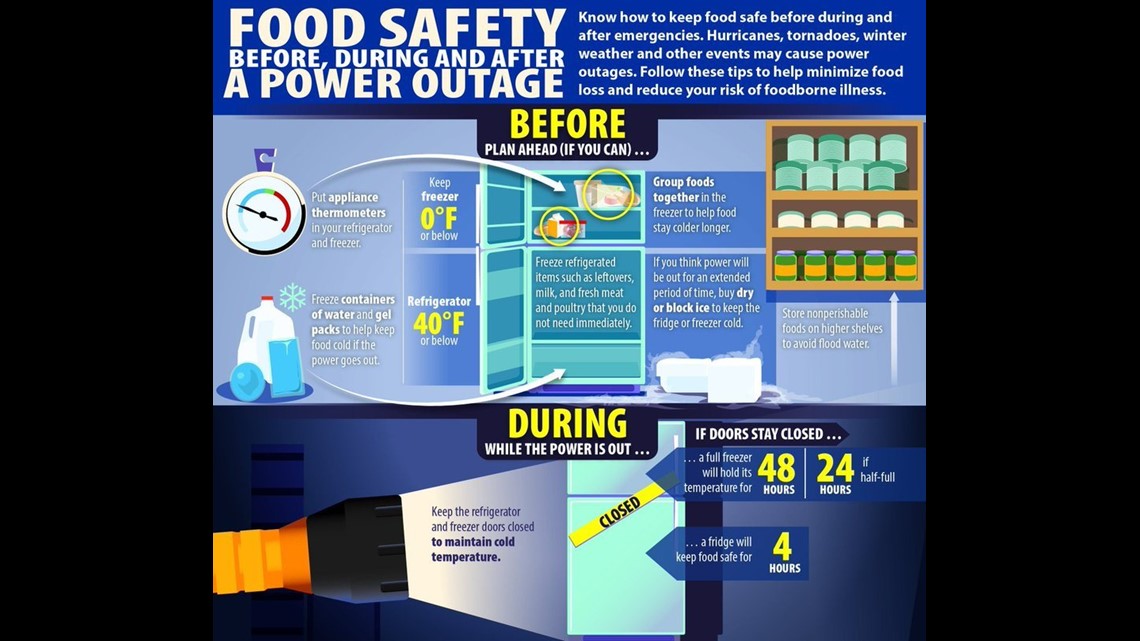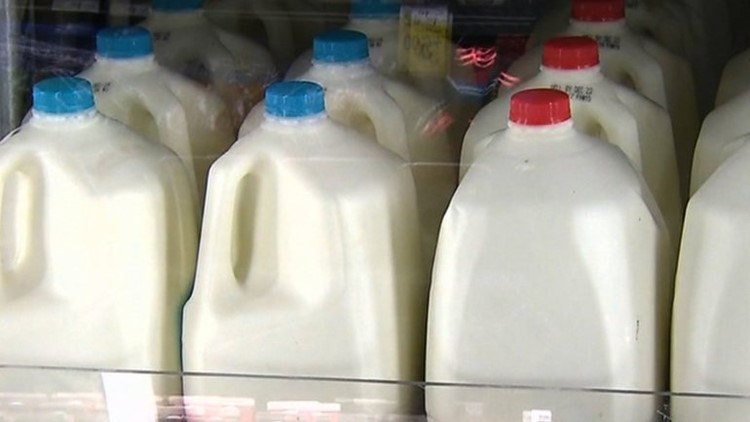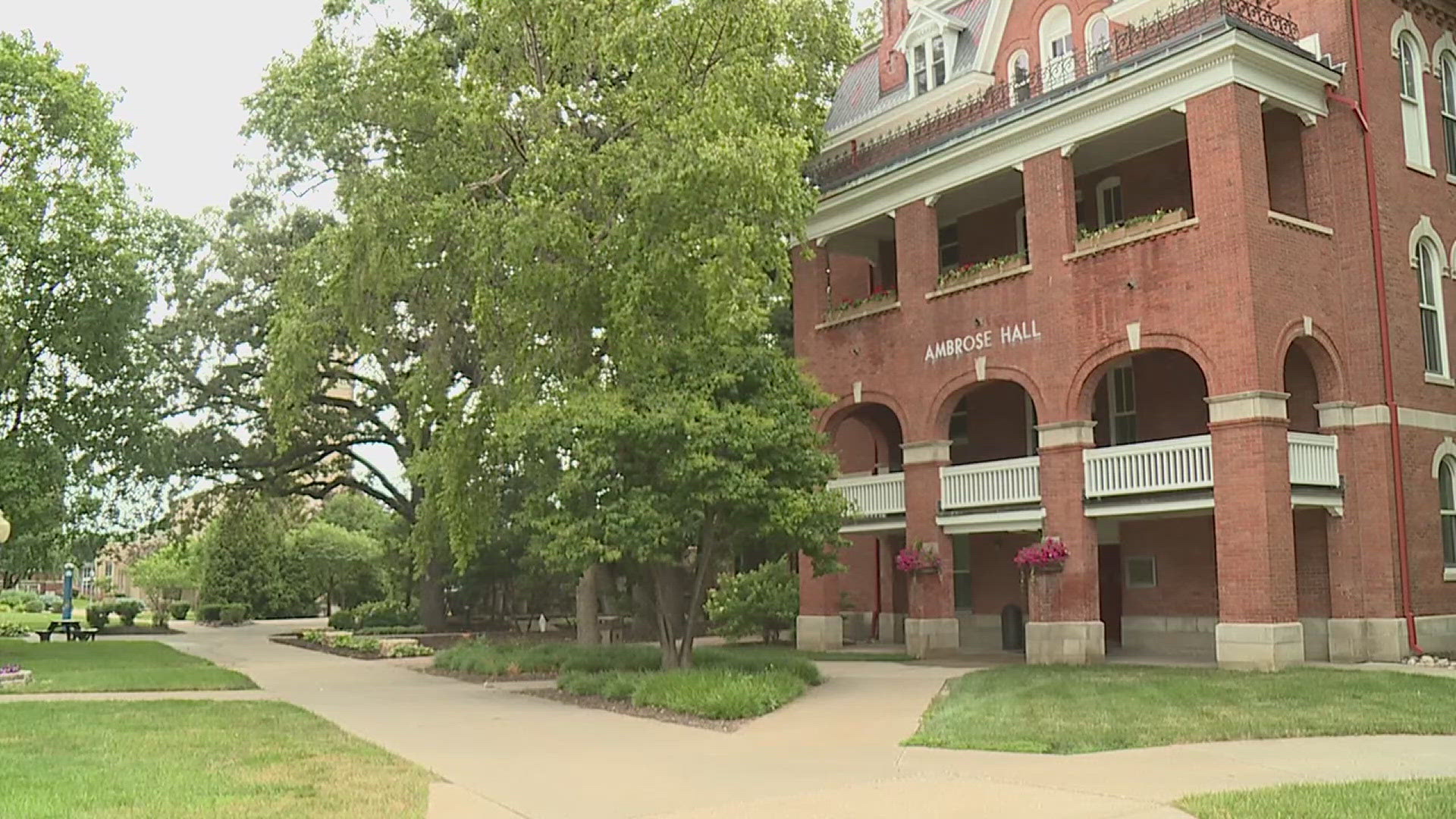If you are wondering about ways to keep your food safe in an event that your power could go out, the U.S. Food and Drug Administration has some tips.


The FDA posted this photo showing what you can do before, during and after a power outage.
Before a power outage:
- Put appliance thermometers in your refrigerator and freezer. You can also freeze containers of water and gel packs to help keep food cold if the power goes out.
- Keep your freezer temperature below or at zero degrees Fahrenheit, and you refrigerator at or below 40 degrees Fahrenheit.
- Make sure you group foods together in the freezer to help food stay colder longer. This includes leftovers, milk, fresh meat and poultry you don’t need right away.
- You can also store nonperishable foods on high shelves to avoid flood water.
- Make sure you have bottled water stored where it will be safe as possible from flooding. If it has an odor, do not drink it and throw it away.
During a power outage:
- Keep refrigerator and freezer doors closed to maintain cold temperatures.
- The FDA said if the doors stay closed, a full freezer will hold its temperature for two days, and one day if it’s half-full.
- A fridge will keep food safe for four hours.
- If you plan to eat refrigerated or frozen meat, poultry, fish or eggs at safe temperatures, it is important to make sure they are thoroughly cooked to a safe minimum internal temperature. According to the FDA, this ensures any foodborne bacteria that may be present are destroyed.
Once power is restored:
- If an appliance thermometer was kept in the freezer, check the temperature. If the temperature reads 40 degrees Fahrenheit or below, the food is safe and may be refrozen.
- If a thermometer was not in the freezer, check each package of food to determine its safety. The FDA said you should not rely on appearance or odor. If food still has ice crystals, or is 40 degrees or below, it is safe to refreeze or cook.
- Refrigerated food should be safe as long as the power was out for no more than 4 hours, and the door was kept shut.
- Throw away any perishable food that has been at temperatures above 40 degrees for more than two hours.
These tips can help minimize food loss and reduce your risk of foodborne illness. According to the FDA, eating dangerous foodborne bacteria will usually cause illness within one to three days. However, sickness can also occur within 20 minutes or up to six weeks later.
Symptoms of foodborne illness can include vomiting, diarrhea, abdominal pain and flu-like symptoms.
In the event of flooding, the FDA recommended you do not eat any food that may have come into contact with flood water. You can find more tips on how to handle food and water in the event of flooding by clicking here.



